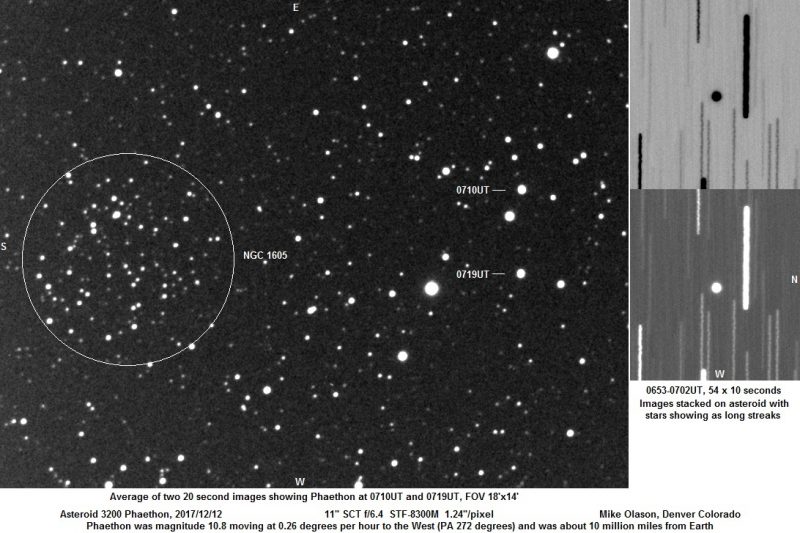
Isn’t it awesome that you can see Geminid meteors – space debris vaporizing in Earth’s atmosphere – with your unaided eye and, on the same nights, take a peek through your telescope to see the 3-mile-wide (5-km-wide) space rock that produces these meteors? Yes, it is!
Although the Geminid meteor shower will peak on the night of December 12 and 13 (mornings of December 13 to 14), its parent body – a curious rock-comet known as 3200 Phaethon – has been visible in our skies for some weeks to those with small telescopes. Charts to find it are included in this article. On December 16, this 3-mile-wide (5-km-wide) space rock will be closer to Earth than it has been since its discovery in 1983. In fact, NASA says, the 2017 encounter is the closest by this asteroid since 1974 and until 2093.
Closest approach to Earth will take place on December 16 at 22 UTC (6 p.m. Eastern Time; translate to your time zone).
Now don’t panic. 3200 Phaethon will pass at an extremely safe distance of a 6,407,618 miles (10,312,061 km) from our planet. Since this is about 27 times the Earth-moon distance, any claim suggesting this pass by 3200 Phaethon is dangerous is both false and misleading.
However, both professional and amateur astronomers are excited, because this mysterious rock-comet will reach a brightness or magnitude of +10.8 to +11, during its sweep past Earth. That makes 3200 Phaethon bright enough to be seen in 4″ or 5″ diameter, and bigger telescopes.

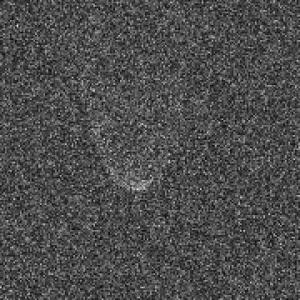
Astronomers first noticed 3200 Phaethon on October 11, 1983 in data obtained by NASA’s Infrared Astronomical Satellite (IRAS). Although it is classified as a Potentially Hazardous Asteroid, the object has a well-known orbit now and doesn’t represent a collision danger, at least not during the coming several centuries for which its trajectory has been calculated. Potentially hazardous, in this case, doesn’t mean the object is on a collision course with Earth. It just means this object makes periodic close approaches to Earth (and likely has done so for millions, if not billions of years) and that it’s large enough to cause significant damage if it were to strike us.
Scientists will be studying 3200 Phaeton’s close approach using the Goldstone Radar in California from December 11-29, and the Arecibo Observatory in Puerto Rico from December 15-19. Astronomer Lance Benner, an asteroid expert at NASA/JPL, commented:
This will be the best opportunity to date for radar observation of this asteroid.
Why is 3200 Phaethon considered to be so strange and mysterious?
It’s because, although most meteor showers occur as Earth passes through debris left by comets, 3200 Phaethon looks more like an asteroid than a comet. Yet the Geminid meteors appear to have the same orbit as 3200 Phaethon, which is now widely accepted as the Geminids’ source. Perhaps 3200 Phaethon is an asteroid that ejects some rocky debris as it comes very close to our sun (its perihelion, or closest point, is less than half the Mercury-sun distance).
In other words, perhaps both comets and asteroids can spawn meteor showers.
Some astronomers call 3200 Phaethon a rock-comet. Others suggest it might be an extinct comet.
Whatever it is, it appears in Earth’s sky to telescope users as a starry point, which moves from night to night in front of the star background. If you have access to a backyard telescope, it would be a fun object to watch while standing under a dark sky, watching for Geminid meteors.
Remember, the Geminids are expected to peak on the nights of December 12 and 13 (mornings of December 13 and 14).
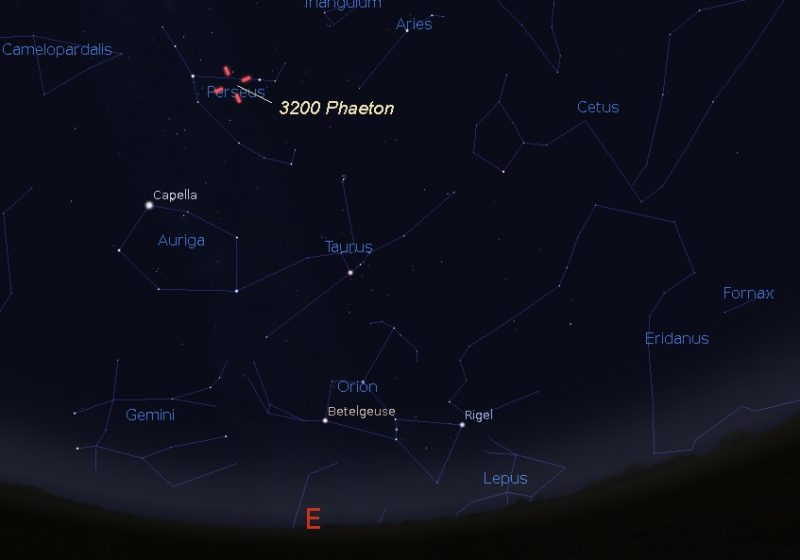
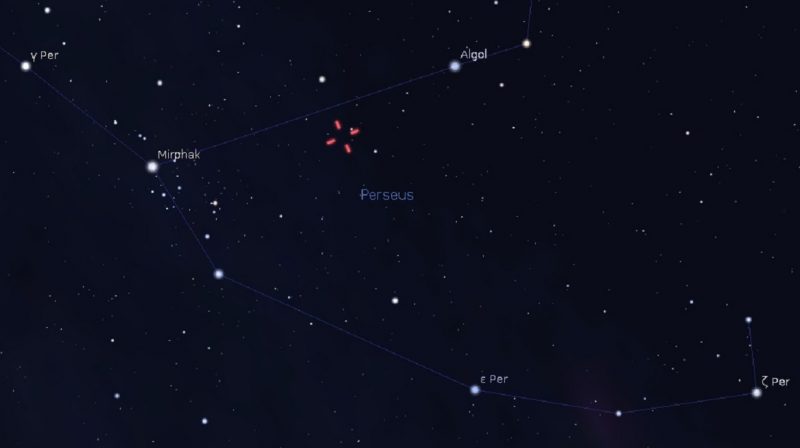
One the best techniques for locating an asteroid is to point a computerized telescope to a star known to be in the space rock’s path, and wait for the asteroid to appear. It will look like a very slow moving “star”. At first, it may be a little tricky to detect since its motion appears very slow. If you are pointing at the correct time and location of the sky, draw a sketch of the positions of the brightest stars and a few other stars you see at the eyepiece. Then compare the positions just 3 to 5 minutes later. Bingo, you will find it!
By updating your sketches showing the asteroid’s position with respect to the stars, you can also show the huge space rock to other people, so they can see the object that is making news, with their own eyes.
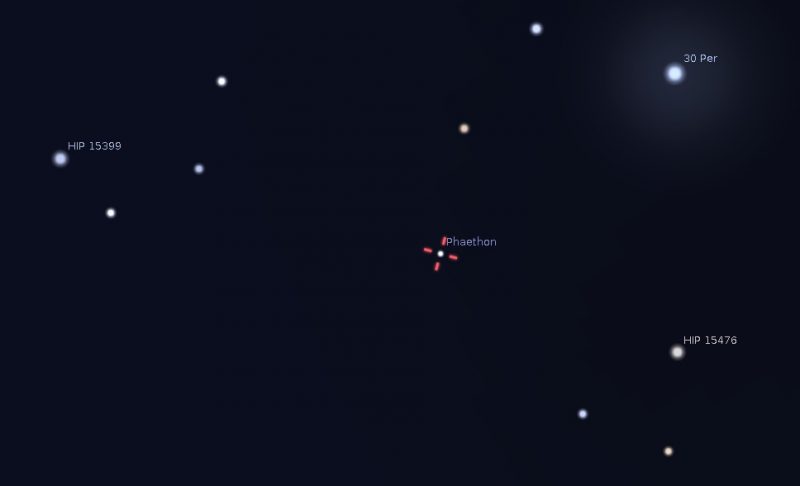
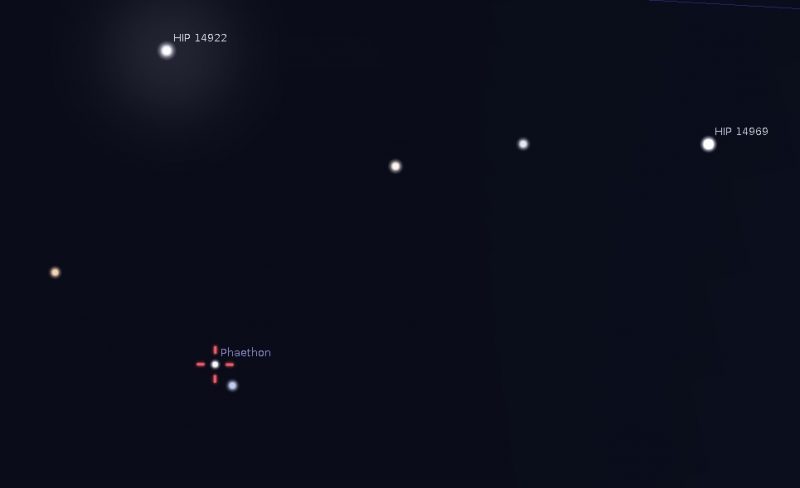
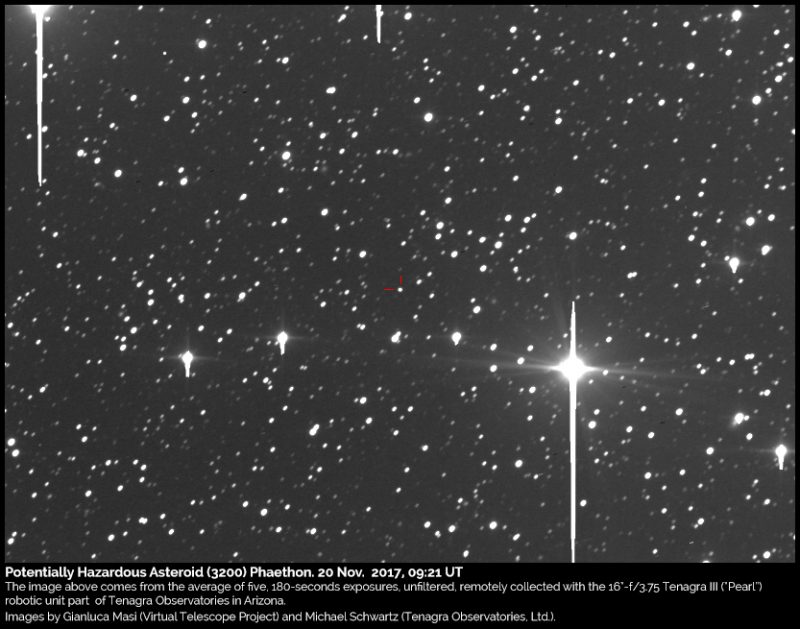
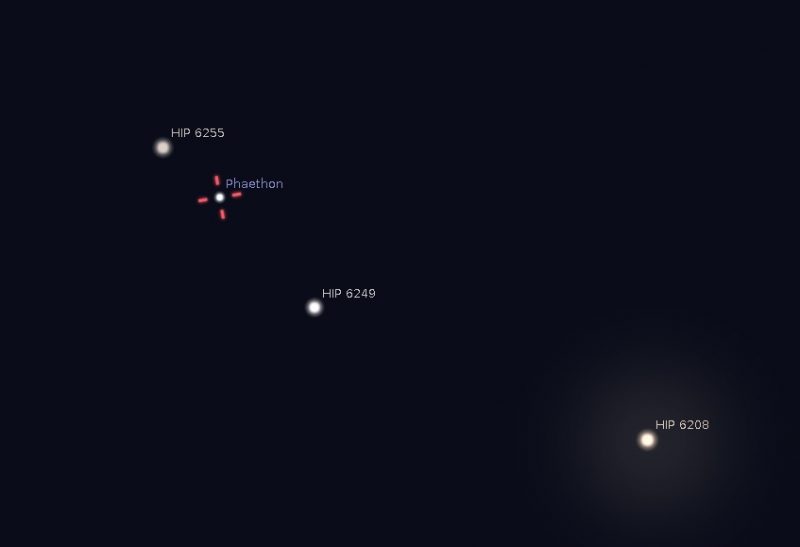

This illustration shows a field of view of a half degree or about 1 lunar diameter. Illustration by Eddie Irizarry using Stellarium.
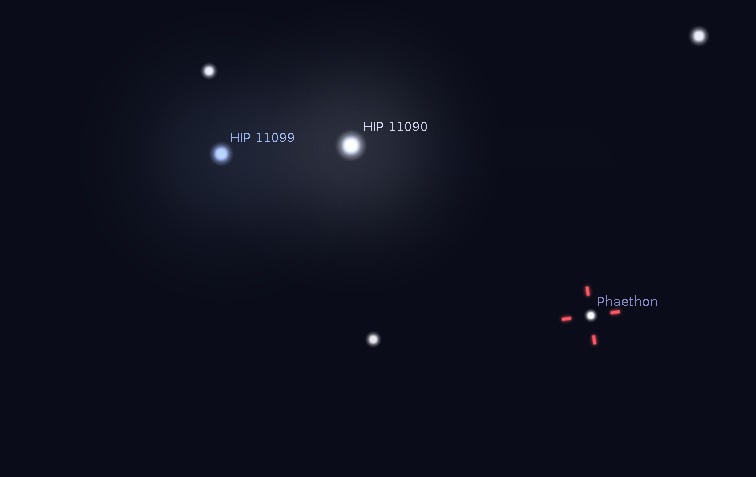
Bottom line: You can’t see 3200 Phaethon – parent of the Geminid meteor shower and a strange asteroid-comet hybrid – with the eye alone. But backyard telescopes can pick it up. Charts and more here.
Read more: What’ll happen when 3200 Phaethon sweeps past Earth?
Everything you need to know about the 2017 Geminid meteor shower











